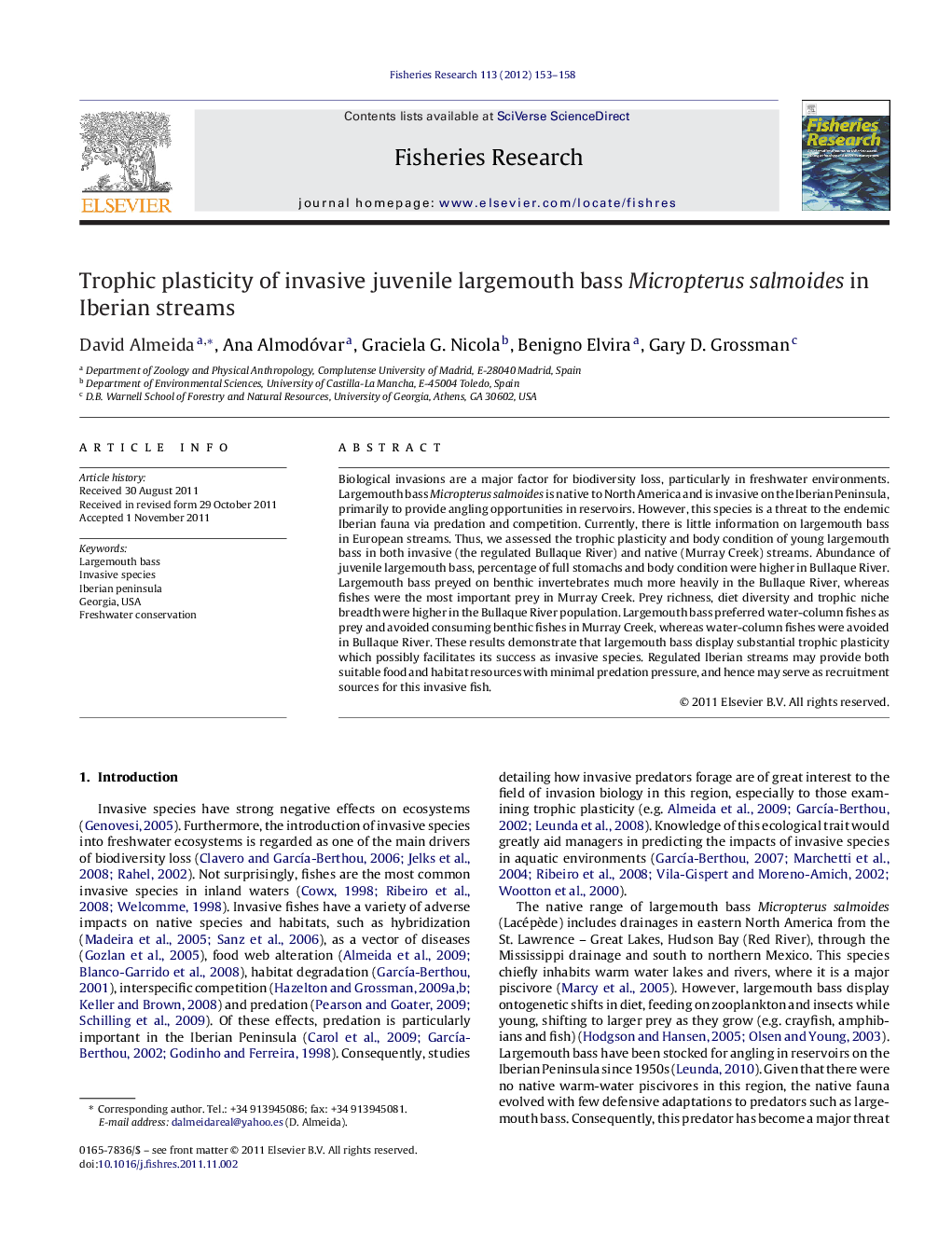| Article ID | Journal | Published Year | Pages | File Type |
|---|---|---|---|---|
| 4543521 | Fisheries Research | 2012 | 6 Pages |
Biological invasions are a major factor for biodiversity loss, particularly in freshwater environments. Largemouth bass Micropterus salmoides is native to North America and is invasive on the Iberian Peninsula, primarily to provide angling opportunities in reservoirs. However, this species is a threat to the endemic Iberian fauna via predation and competition. Currently, there is little information on largemouth bass in European streams. Thus, we assessed the trophic plasticity and body condition of young largemouth bass in both invasive (the regulated Bullaque River) and native (Murray Creek) streams. Abundance of juvenile largemouth bass, percentage of full stomachs and body condition were higher in Bullaque River. Largemouth bass preyed on benthic invertebrates much more heavily in the Bullaque River, whereas fishes were the most important prey in Murray Creek. Prey richness, diet diversity and trophic niche breadth were higher in the Bullaque River population. Largemouth bass preferred water-column fishes as prey and avoided consuming benthic fishes in Murray Creek, whereas water-column fishes were avoided in Bullaque River. These results demonstrate that largemouth bass display substantial trophic plasticity which possibly facilitates its success as invasive species. Regulated Iberian streams may provide both suitable food and habitat resources with minimal predation pressure, and hence may serve as recruitment sources for this invasive fish.
► We examined trophic flexibility of largemouth bass and invasion success. ► Invasive juveniles showed higher variability in the diet and higher body condition. ► Invasive fish shifted to a generalist feeding strategy. ► Trophic plasticity may aid in invasion success for this species.
